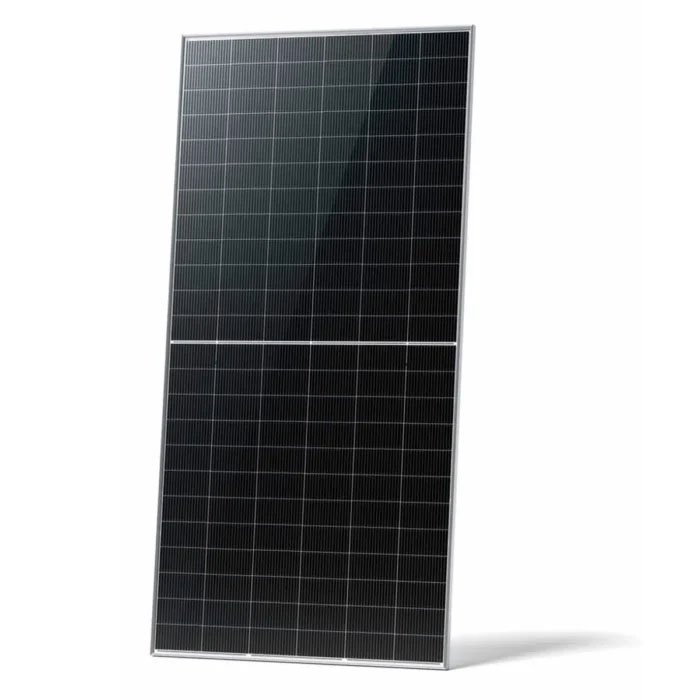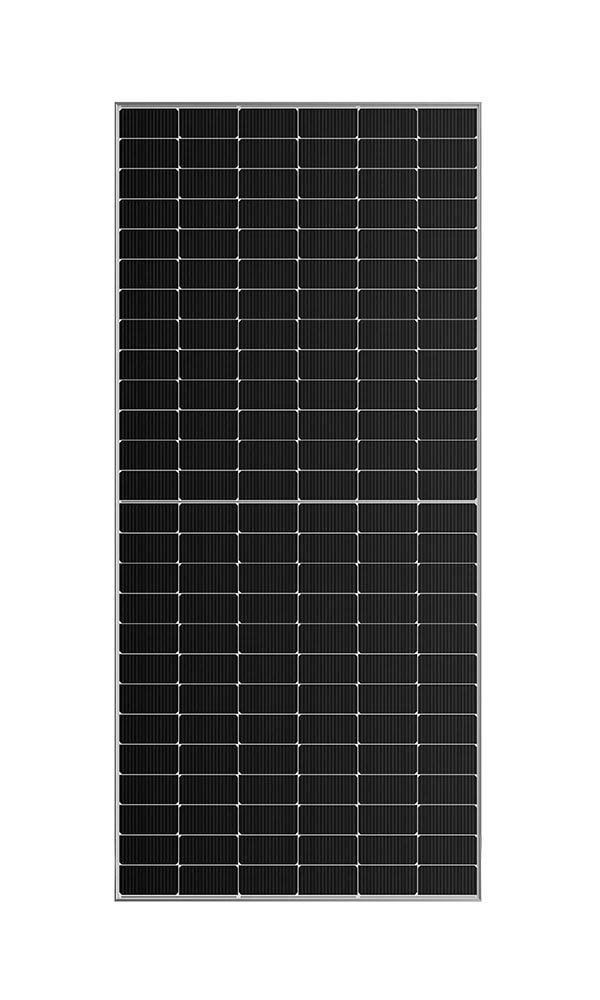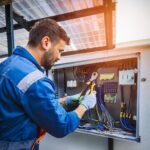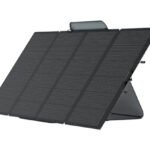Solar cell technology is constantly evolving. TOPCon solar cells are more efficient and have a similar structure to PERC and PERT cells. In this article, we explain the structure, function, advantages and disadvantages, and price of TOPCon solar cells.

What are TOPCon solar cells?
Topcon solar cells are highly efficient silicon solar cells. They combine the advantages of PERC and HJT technologies, achieving up to 5% higher efficiency than conventional cells. TOPCon stands for Tunnel Oxide Passivating Contact. They are currently the most widely used technology among new solar cells.
How are TOPCon solar cells constructed?
TOPCon solar modules use n-type solar cells. They consist of an n-doped silicon wafer and are so negatively charged. Topcon solar cells utilize a specific backside passivation with a thin oxide film. This passivation minimizes electronic defects within the cell. They also use a reduced number of metal contacts on the front side, which increases light penetration and thus maximizes light absorption. Topcon cells also utilize a tunnel, which optimizes electron flow.
Conventional solar cells, on the other hand, have metal contacts on both the front and back, which leads to energy losses. Also, the back passivation of these cells is often done with aluminium and is not as effective as the oxide passivation used in TOPcon.

- Anti-reflective coating: An anti-reflective coating is applied to the front of the photovoltaic module to minimize light loss because of reflection and maximize energy yield.
- Front contact: A thin layer of a conductive material such as silver or aluminium is applied directly to the anti-reflective coating. This layer serves as the positive electrode contact and allows current to flow from the module.
- Below the front contact is the n-doped layer of silicon and phosphorus.
- Directly beneath this layer is a p-doped layer of silicon and boron. Sunlight can release individual electrons from these silicon layers, thus generating electricity.
- Beneath this silicon layer is a thin layer of silicon oxide. This layer is what makes TOPCon special and blocks the passage of charge carriers. However, the current can overcome the barrier because of the tunnelling effect. This can be explained quantum mechanically.
- Back contact: On the back of the polycrystalline silicon is another conductive contact that collects the electrical current and conducts it out of the module. This back contact serves as the negative electrode.
How do TOPCon solar cells work?
TOPCon solar cells avoid direct contact between the metal of the terminals and the silicon layer. This prevents the recombination of charge carriers, which normally occurs on the back of the cell, and results in higher solar cell efficiency.
To prevent recombination, a thin layer of silicon oxide is applied to the surface of the solar cell. This layer passivates the surface and blocks the passage of charge carriers. Current overcomes the barrier because of quantum mechanical effects. This is known in physics as the “tunnelling effect.” The heavily doped silicon layer also improves electrical conductivity and minimizes transmission losses.

What are the pros and cons of TOPCon solar modules?
TOPCon solar cells are significantly ahead of their conventional counterparts, especially in terms of efficiency. But other aspects speak in TOPCon’s favour.
Pros
Cons
Advantages of TOPCon modules
- Higher efficiency: TOPCon solar modules have significantly higher efficiency than conventional modules. This means they can convert more solar energy into electrical power.
- Lower temperature coefficient: The temperature coefficient indicates how much module efficiency decreases with increasing temperature. TOPCon modules have a lower temperature coefficient, meaning they experience less loss of performance at high temperatures, such as those often found on roofs.
- Less susceptible to shading: TOPCon modules are better able to cope with shading due to their special tunnel oxide construction. They can minimize performance losses caused by partial shading, whereas conventional solar modules then produce hardly any power.


Disadvantages of TOPCon modules
- Higher manufacturing costs: The production of TOPCon solar modules requires advanced technologies and high-quality materials such as silver, which leads to higher manufacturing costs.
- More complex manufacturing process: The manufacturing of TOPCon modules also requires a more complex process compared to conventional modules, which can lead to higher manufacturing costs.
- Limited market maturity: TOPCon technology is a relatively new development in the solar industry, meaning it is not yet as widely used as conventional modules. This can lead to longer delivery times for materials and spare parts. There are also no general standards for mass production yet.

What efficiency do TOPCon solar cells achieve?
TOPCon solar cells achieve an efficiency of up to 25%. PERC solar cells have an efficiency of 21.5 to 22.5%.
| Cell type | Efficiency |
| PERC solar cells | 21.5 to 22.5% |
| TOPCon solar cells | up to 25% |
Other posts you may be interested in
Which manufacturers of TOPCon solar cells are there?
| Manufacturer | Performance range |
| Luxor | 400 – 435 Wp |
| AXITEC | 400 – 660 Wp |
| CDZ Solar | 415 – 670 Wp |
| Solar Hero | 400 – 430 Wp |
| Soluxtec | 345 – 430 Wp |
| SOLYCO Solar | 370 – 430 Wp |
| Sonnex Energy | 365 – 605 Wp |
| CETC Solar | 330 – 540 Wp |
| CSI Solar | 395 – 695 Wp |
| EGing PV | 400 – 680 Wp |
| HY SOLAR | 400 – 670 Wp |
| Jinko Solar | 320 – 635 Wp |
| LESSO New Energy | 525 – 670 Wp |
How much do TOPCon solar modules cost?
The price of TOPCon solar modules is currently about 10% higher than that of conventional modules. For example, the Jinko Tiger Neo 445W TOPCon N-Type Mono 54 Cell Black costs approximately £85.16 each.






Leave a Reply